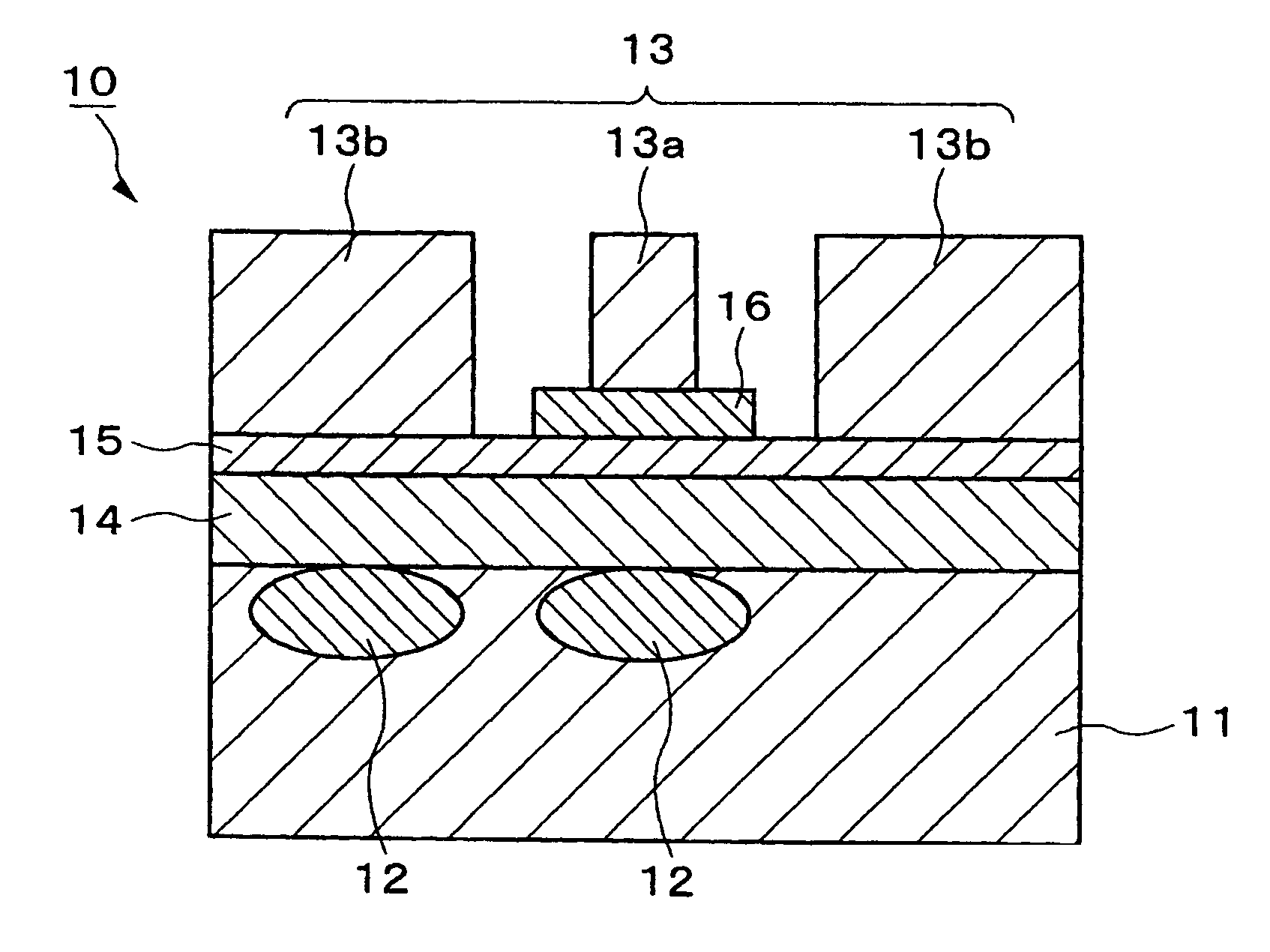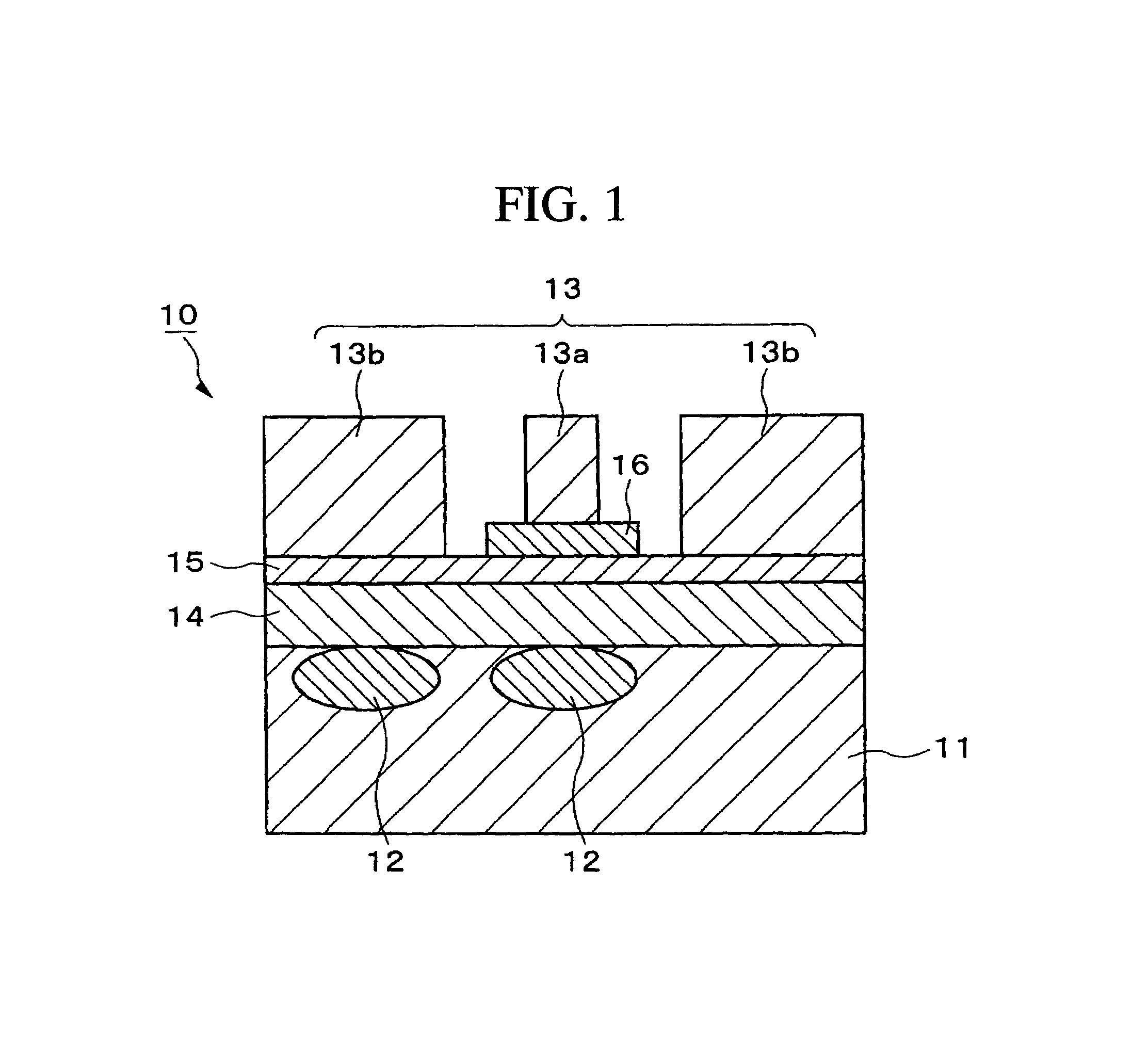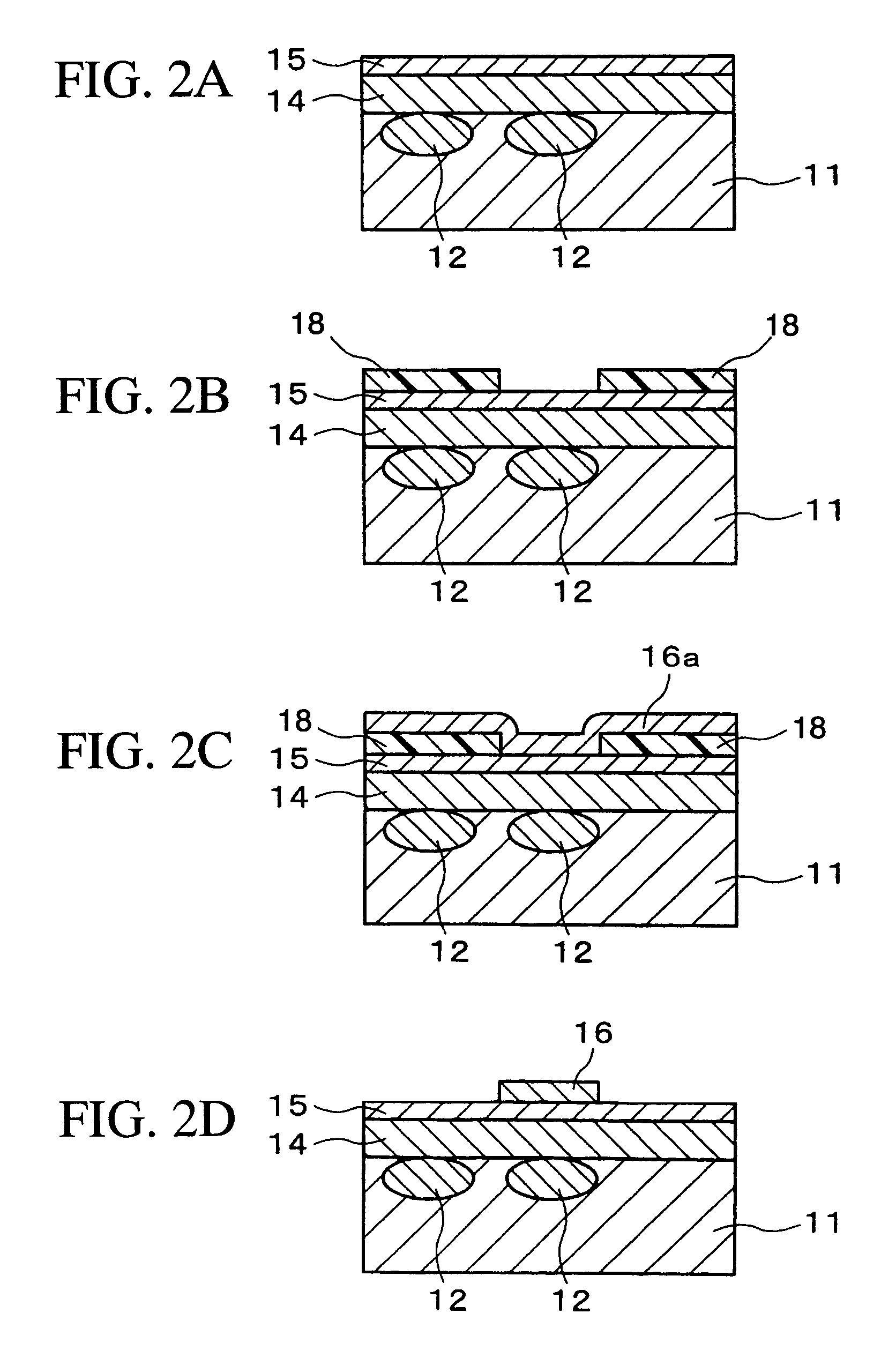Optical waveguide type optical modulator and production method therefor
a technology of optical modulator and optical waveguide, which is applied in the direction of optical waveguide light guide, instruments, optics, etc., can solve the problems of accelerated penetration of resist components into the buffer layer, contamination of the buffer layer, and amine-based compound contamination, so as to prevent the leakage of electric current applied to the electrode caused by contaminants on the surface or inside of the buffer layer, and achieve excellent operation stability. , the effect of preventing the effect of leaking the electric current applied to th
- Summary
- Abstract
- Description
- Claims
- Application Information
AI Technical Summary
Benefits of technology
Problems solved by technology
Method used
Image
Examples
example 1
[0074]The optical waveguide type optical modulator 10 shown in FIG. 1 was manufactured in the following manner.
[0075]Optical waveguides 12 were formed on the surface of the ferroelectric substrate 11, which is made of lithium niobate, by performing diffusion processing of an optical waveguide pattern made of titanium having a thickness of 90 nm, for 15 hours under an oxygen atmosphere and at a temperature of 1000° C. A silicon oxide (SiO2) film with a thickness of 1000 nm, which forms the buffer layer 14, was then deposited on the substrate using a vacuum deposition method. After performing heat treatment at 500° C. in a stream of oxygen, a dielectric layer 15, which is made of silicon nitride and has a thickness of 100 nm, was formed on the entire surface of the buffer layer 14 by a sputtering method.
[0076]Then, after a photoresist was spin-coated on the entire surface of the dielectric layer 15 and subsequently hardened, a signal field adjustment region 16 was exposed onto the pho...
example 2
[0078]The optical waveguide type optical modulator 10 shown in FIG. 1 was manufactured in the same manner as in the example 1, with the exception that the dielectric layer 15 was formed of silicon oxynitride.
example 3
[0126]Optical waveguides 22 were formed on the surface of a ferroelectric substrate 21 made of Z-cut lithium niobate by performing a diffusion processing of an optical waveguide pattern made of Ti having a thickness of 90 nm, for 20 hours under an oxygen atmosphere and at a temperature of 1000° C. A SiO2 film with a thickness of 1 μm, which forms the buffer layer 23, was deposited on the substrate using a vacuum deposition method. After performing heat treatment at 600° C. for 5 hours in a stream of oxygen, an upper protective film 27 made of SiO2 having a thickness of 50 nm was formed on the entire surface of the buffer layer 23 by employing RF sputtering.
[0127]A transition metal layer made of Ti having a thickness of 50 nm, and an Au film having a thickness of 50 nm were formed sequentially on the protective film 27, using a vacuum deposition method within the same film deposition apparatus. A resist pattern was formed on the Au film using photolithographic techniques, and a thick...
PUM
 Login to View More
Login to View More Abstract
Description
Claims
Application Information
 Login to View More
Login to View More - R&D
- Intellectual Property
- Life Sciences
- Materials
- Tech Scout
- Unparalleled Data Quality
- Higher Quality Content
- 60% Fewer Hallucinations
Browse by: Latest US Patents, China's latest patents, Technical Efficacy Thesaurus, Application Domain, Technology Topic, Popular Technical Reports.
© 2025 PatSnap. All rights reserved.Legal|Privacy policy|Modern Slavery Act Transparency Statement|Sitemap|About US| Contact US: help@patsnap.com



